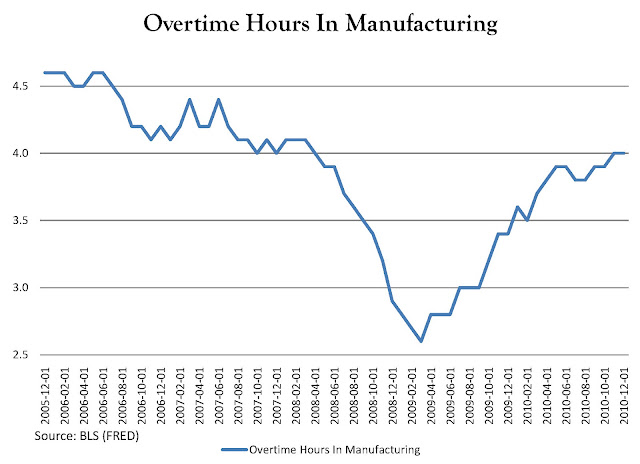The employment situation is by far the most significant of all the major economic indicators. The reasons include the data timeliness as it is literally released one week after the month being looked at and also the fact it includes data on household earnings and the job market which determines future spending.
First thing to note is that the employment situation is broken up into two sections; the household survey and the establishment (or payroll) survey. The household survey is essentially the government contacting 60,000 people each month, and from this data the civilian labor force along with how many of these people actually have jobs is calculated. Furthermore, it is from the household survey that we derive the widely reported unemployment rate. The establishment survey is considered to be a better employment measure than the household survey as its data comes directly from businesses, not households. Each month the Bureau of Labor Statistics gets in touch with 400,000 companies and government agencies which are responsible for the employment of 40 million or so workers. The following is a graph of total nonfarm payrolls (in thousands):
One important thing to notice is the average number of hours worked in a week. If the number of weekly hours increases for three consecutive months (aka the three month moving average is increasing), it is a strong signal that companies will soon accelerate hiring. The same is true vice-versa, meaning if the three month moving average is declining then expect layoffs and cutbacks. From the BLS employment situation report:"The average workweek for all employees on private nonfarm payrolls held at 34.3 hours in December. The manufacturing workweek for all employees declined by 0.1 hour to 40.2 hours, while factory overtime remained at 3.1 hours."
As the following graph shows average weekly hours have remained steady, indicating the economy is not going to be doing much on the hiring front:
 Overtime hours are noteworthy because in times of economic uncertainty, rather than hiring new workers companies might ask their employees to work additional hours. The catch is that overtime hours can be costly for a firm and so if there is a consistent upward trend in hours for 3 months firms are put under pressure to hire again. Changes in overtime manufacturing hours are considered particularly sensitive to fluctuations in demand. As the following graph shows over time hours have indeed increased but are still below pre-recessionary levels:
Overtime hours are noteworthy because in times of economic uncertainty, rather than hiring new workers companies might ask their employees to work additional hours. The catch is that overtime hours can be costly for a firm and so if there is a consistent upward trend in hours for 3 months firms are put under pressure to hire again. Changes in overtime manufacturing hours are considered particularly sensitive to fluctuations in demand. As the following graph shows over time hours have indeed increased but are still below pre-recessionary levels:One of the best things to look at when seeking to reveal trends in future employment is temporary employment. Companies often prefer to employ temporary help, due to lingering uncertainty I suppose, before taking the big daddy all in expensive step of permanently hiring and training new full-time employees. Temps are cheaper and they give firms flexibility to add and reduce staff during these most certainly uncertain times. The following graph paints the picture that firms are adding temps, but we have some time yet to see if this translates into any permanent hiring.
The source for the graph above is indeed the BLS and the data was extracted from the best site ever created- FRED.
The most recent employment situation reveals that the unemployment rate edged down to 9.4% and nonfarm payroll employment increased by a wompish 103,000 -considerably below expectations of around 150,000. The drop from 9.8 to 9.4 in December, on the surface seems pretty great, however it may just reflect people leaving the labor force because they no longer receive unemployment benefits and consider themselves hopeless. The WSJ real time economics blog highlights this change:
"The big drop in the overall unemployment rate and the U-6 measure was primarily due to a decline in the number of unemployed, which fell by 556,000 in December. That’s good news since the number of people who are employed increased by nearly 300,000. But that still leaves over 250,000 workers leaving the labor force altogether. That likely means a substantial part of the drop was due to workers giving up. Anyone unemployed over 99 weeks has no access to unemployment benefits and many lose access even earlier. Once those benefits expire, the unemployed may stop considering themselves part of the labor force."
Sudeep Reddy of the Wall Street Journal's Real Time Economics Blog makes at least one other interesting point claiming that at this pace we will have to wait until the 2020's before the unemployment rate hits 5% again:
"The economy lost almost 8.4 million jobs from December 2007 to December 2009. It added 1.1 million jobs in 2010. At December’s pace, just replacing the rest of those lost jobs would take 70 more months — roughly six years, taking us to November 2016...But the economy also needs to add 100,000 to 125,000 jobs a month just to keep pace with growth in the labor force... Even employment gains close to October’s pace (210,000 jobs) would take us into the next decade before seeing the unemployment rate back near 5%."That's a bummer. For considerably more analysis on the employment situation please read the Wall Street Journals Real Time Economics Blog.



Economics I can understand. Well done.
ReplyDeleteYou can no longer measure unemployment using payroll employmet.
ReplyDeleteThank you very much for sharing this article:
ReplyDeletepackers and movers pune
packers and movers bangalore
Awesome article post. Much obliged. calculatestime
ReplyDeleteI read that Post and got it fine and informative. anunt gratuit
ReplyDelete